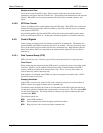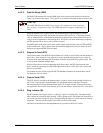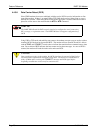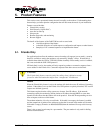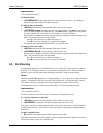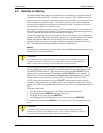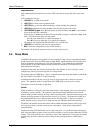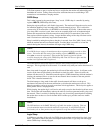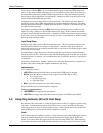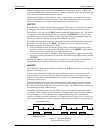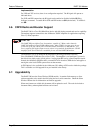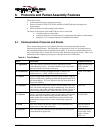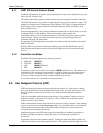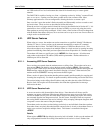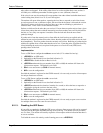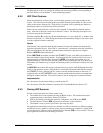
Feature Reference DART 300 Modem
Page 34 2110212 Rev 1.0
If logic sleep is enabled (S31 > 0), it will automatically engage on the next CDPD sleep mode
interval. Logic sleep continues until data, or an AT command, is received from the local host; or
the modem must perform the periodic CDPD sleep mode check. After performing the periodic
network check, and provided there is no pending AT command or traffic from the local host, the
modem resumes both CDPD and logic sleep.
The modem can use logic sleep while in auto-answer mode. The modem logic must wake-up
periodically as part of the CDPD sleep operation to check the network for messages. Incoming
data from the network amounts to a RING when auto-answer is enabled, so the modem logic will
be awake to receive messages.
This feature is controlled with register S31 (Logic Sleep). Setting the register to 0 (zero) will
disable logic sleep. Setting it to 1 will enable normal logic sleep. In this condition the modem
will reduce power until the local host sends a command or CDPD sleep operation requires activity.
It will wake as soon as a character arrives from the local host, or automatically as needed to make
periodic network checks for traffic.
Logic Deep Sleep
Setting the Logic Sleep register to 2 will enable deep-sleep. This will cause the modem to shut
down even more hardware, conserving even more power. Automatic wake-ups to check the
network will still occur so no incoming network traffic is lost, however it will take longer to wake
for incoming local host data.
The disadvantage to logic deep-sleep is that the modem will lose the first incoming character(s)
from the local host (DTE). In fact, the modem will take 80 milliseconds, from the start of the first
incoming character, to wake up. At a communication rate of 19200 bps, the delay is equivalent to
154 characters.
The local host should send a “dummy” character first, which the modem will lose, and then wait
the 80ms delay before sending the complete command or data string.
Implementation
(AT is omitted for brevity.)
1. +WS175=n where n is the idle time in seconds before CDPD sleep is engaged.
2. S31=n where n is the level of logic sleep to apply when CDPD sleep is active:
• 0 = no logic sleep
• 1 = standard logic sleep
• 2 = logic deep sleep
3. &W to write the configuration to non-volatile memory.
Sleep will become active when the modem re-registers.
To force re-registration now:
4. +WPDEREG to de-register from the network.
5. +WS173=1 to engage auto-registration mode and register with CDPD sleep enabled.
5.5. Using Ring Indicator (RI) with Host Sleep
Ring Indicator (RI) can be used as a wake-up signal to the local host if it supports a power-saving
sleep mode. In implementations where the local host acts as a server, providing its data upon
client request, the local host can sleep between sessions. When a packet arrives, the modem will
toggle the RI signal to indicate the local host’s attention is required.
Details
If the local host device is capable of going to “sleep” between sessions and the RI signal is used to
wake it up, attention must be paid to flow control between the local host and the DART 300
modem. Use of the feature will require local flow control be used (RTS/CTS). While sleeping,
the local host should de-assert DTR, indicating the host is not ready to receive data from a client.



